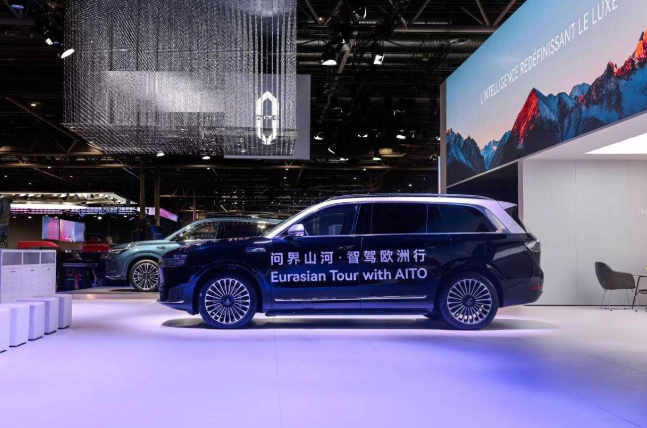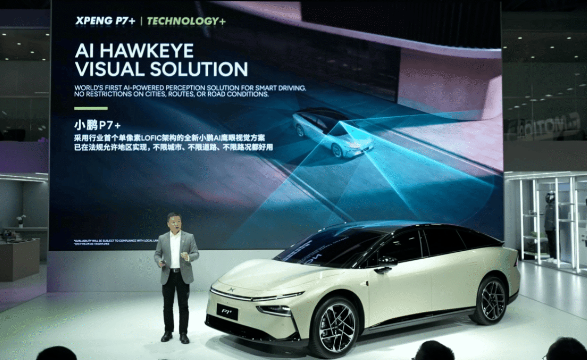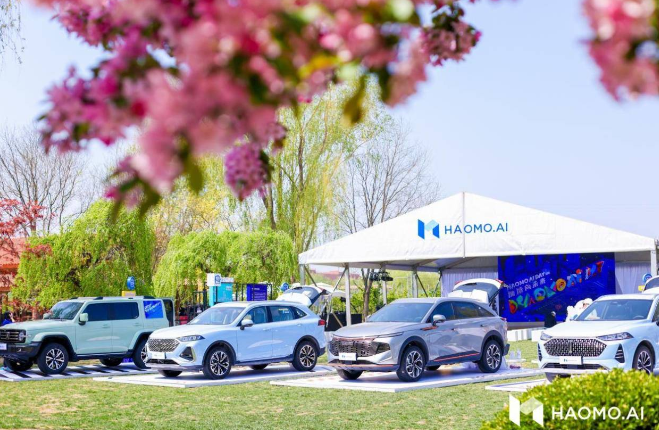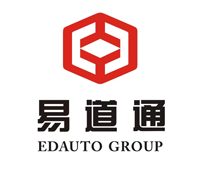At the just-concluded Paris International Auto Show, Chinese car brands demonstrated amazing progress in intelligent driving technology, marking an important step in their global expansion. Nine well-known Chinese automakers including AITO, Hongqi, BYD, GAC, Xpeng Motors
and Leap Motors participated in the exhibition, highlighting the strategic shift from pure electrification to vigorous development of intelligent driving capabilities. The shift underscores China's ambition to not only dominate the electric vehicle (EV) market but also lead the fast-growing field of autonomous driving.

Hercules Group subsidiary AITO made headlines with its fleet of AITO M9, M7 and M5 models, which embarked on an impressive journey through 12 countries before arriving in Paris. The fleet successfully demonstrated its intelligent driving technology over approximately 8,800 kilometers of a journey of nearly 15,000 kilometers, demonstrating its adaptability to different driving conditions and regulations. Such demonstrations are crucial to building trust and credibility in the international market, as they demonstrate the reliability and effectiveness of China's intelligent driving systems in real-world scenarios.
Xpeng Motors also made an important announcement at the Paris Motor Show. Its first artificial intelligence car, Xpeng P7+, has started pre-sales. This development demonstrates Xpeng Motors’ ambition to advance intelligent driving technology and capture a larger share of the global market. The launch of AI-powered vehicles is in line with growing consumer demand for smarter and more efficient transportation solutions, further solidifying China's position as a leader in new energy vehicles.
China New Energy Vehicle Technology
The technological progress of China's new energy vehicles deserves attention, especially in the field of intelligent driving. A key trend is the application of end-to-end large model technology, which significantly accelerates the progress of autonomous driving. Tesla uses this architecture in its Full Self-Driving (FSD) V12 version, setting the benchmark for responsiveness and decision-making accuracy. Chinese companies such as Huawei, Xpeng, and Ideal have also integrated end-to-end technology into their vehicles this year, enhancing the smart driving experience and broadening the applicability of these systems.
Additionally, the industry is witnessing a shift towards lightweight sensor solutions, which are becoming increasingly mainstream. The high cost of traditional sensors such as lidar poses challenges to the widespread adoption of smart driving technology. To this end, manufacturers are developing more cost-effective and lightweight alternatives that offer similar performance but at a fraction of the price. This trend is critical to making smart driving accessible to a wider audience, thereby accelerating its integration into everyday vehicles.

Another major development is the shift in smart driving models from high-end luxury cars to more mainstream products. The democratization of this technology is critical to expanding the market and ensuring that smart driving features are available to a wider range of consumers. As companies continue to innovate and improve technology, the gap between high-end cars and mainstream cars is narrowing, paving the way for smart driving to become standard in various market segments in the future.
China’s new energy vehicle market and trends
In the future, driven by technological breakthroughs and innovative solutions, China's new energy vehicle market will usher in rapid growth. Xpeng Motors announced that its XNGP system will be launched in all cities across the country in July 2024, which is an important milestone. The upgrade from "available nationwide" to "easy to use nationwide" reflects the company's commitment to making smart driving more accessible. Xpeng Motors has set ambitious standards for this, including no restrictions on cities, routes and road conditions, and aims to achieve "door-to-door" smart driving in the fourth quarter of 2024.
Additionally, companies such as Haomo and DJI are pushing the boundaries of smart driving technology by proposing more cost-effective solutions. These innovations help propel the technology into mainstream markets, allowing more people to benefit from advanced driver assistance systems. As the market develops, the integration of intelligent driving technology will likely drive the development of related industries, including intelligent transportation systems, smart city infrastructure, V2X communication technology, etc.

The convergence of these trends heralds broad prospects for China’s intelligent driving market. With the increasing improvement and popularization of technology, it is expected to usher in a new era of safe, efficient and convenient transportation. The rapid development of intelligent driving technology will not only change the automotive landscape, but will also help achieve the broader goals of sustainable urban transportation and smart city initiatives.
To sum up, China's new energy vehicle industry is at a critical moment, and Chinese brands have made great progress on the global stage. A focus on smart driving technology, coupled with innovative solutions and a commitment to accessibility, makes Chinese manufacturers key players in the future of mobility. As these trends continue to evolve, the smart driving market is set to continue to expand, providing exciting opportunities for consumers and the industry as a whole.
Post time: Nov-05-2024


